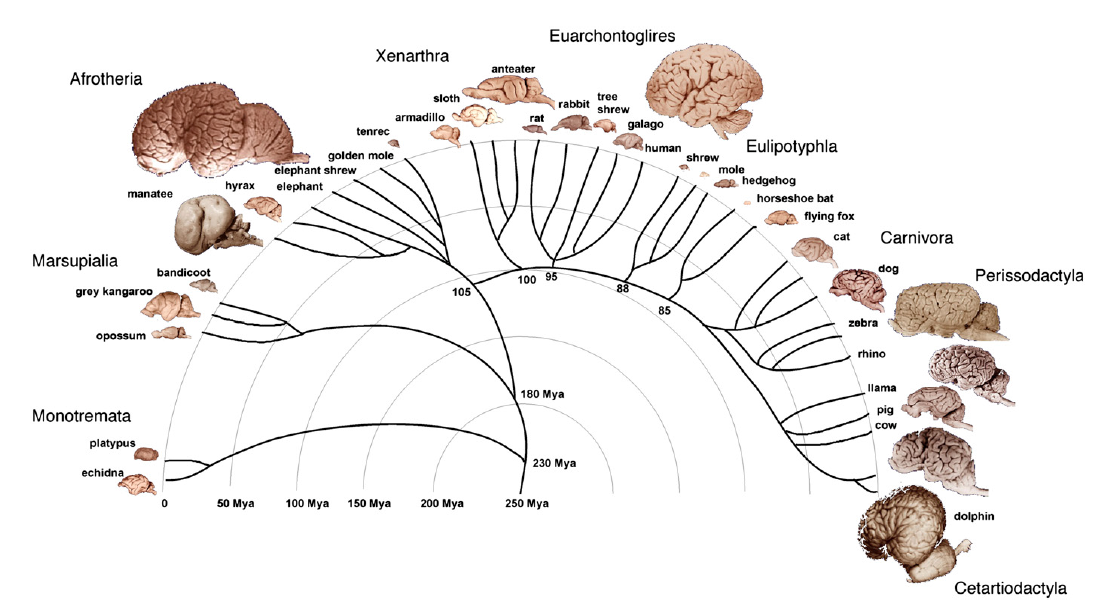|
|||||||||||||||
|

CLICK ON weeks 0 - 40 and follow along every 2 weeks of fetal development
|
||||||||||||||||||||||||||||
New links between genes and bigger brains A team of scientists from both the University of Bath and the University of Lincoln in the United Kingdom, have been comparing genomes of 28 mammals with differing sizes of neocortex — that brain region involved in higher cognitive thinking such as language and decision-making. The size of the neocortex differs hugely between species. And, it is the part of the brain that has grown the most in humans over our evolutionary time on earth. The study, published in the Royal Society journal Open Biology, identified a number of gene families — which can grow and contract through gene duplication and deletion — that have expanded in line with the growth of the neocortex relative to the size of the brain.
Researchers hope these discoveries might give us a better understanding of which genes are key to human brain growth. This information could lead to new insights into what may go wrong in a variety of mental health disorders, including dementia. Dr Araxi Urrutia, from the Milner Centre for Evolution at the University of Bath's Department for Biology & Biochemistry, along with Dr Humberto Gutierrez from the School of Life Sciences at Lincoln University, led the research leading to the discovery of new gene families.
Researchers show that neocortical expansion is strongly associated with variations in gene family size (GFS) in mammals. The high proportion of links between GFS and brain enlargement in mammals, however, suggests changes in either is secondary to neocortex size and encephalization. Analysis of data revealed that genes in families associated with neocortex size showed significantly higher levels of expression before maximal cortical development is reached in humans, supporting a functional role for gene families in development of a large neocortex. Among the 272 gene families whose size was correlated to neocortex expansion, 16 distinct biological gene functions and relationships were found to be significant. Among them, cell to cell signalling and increasing and/or decreasing chemical concentrations play critical roles in development and maintenance of the nervous system. Examples are Nuclear receptors (NRs) associated with gene families, and the tyrosine kinase precursor family, widely known to promote cell survival, proliferation, adhesion and migration in the central nervous system. Also, the leukotriene B4 receptor 2 family, including leukotriene B4, a proinflammatory signalling molecule which has been shown to mediate regulation of neural stem cell proliferation and differentiation Abnormal development and degeneration of neurons has long been linked to a variety of mental health illnesses, so identifying genes associated with larger brain size helps unravel the human brain even more. These pathways may not be present in less large brained mammals, so the discovery might help fill in gaps missing from previous mouse studies. Abstract |
Oct 6, 2016 Fetal Timeline Maternal Timeline News News Archive  Large brains appear several times in diverse mammal species. Examples are illustrated here for each major mammal group. Mammalian brain radiation pictured above is based on the findings of Murphy et al. and Kaas. Brain images are from the University of Wisconsin and Michigan State Comparative Mammalian Brain Collections (www.brainmuseum.org). Image Credit: Suzana Herculano-Houzel, Instituto de Ciências Biomédicas
|
||||||||||||||||||||||||||||

